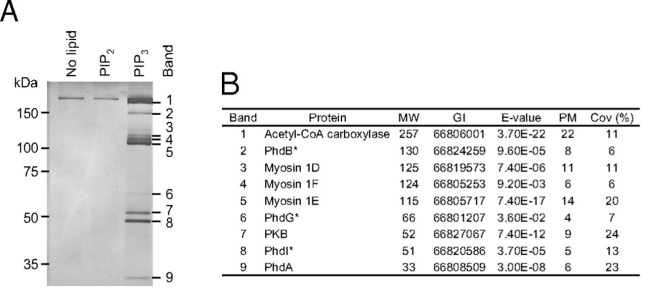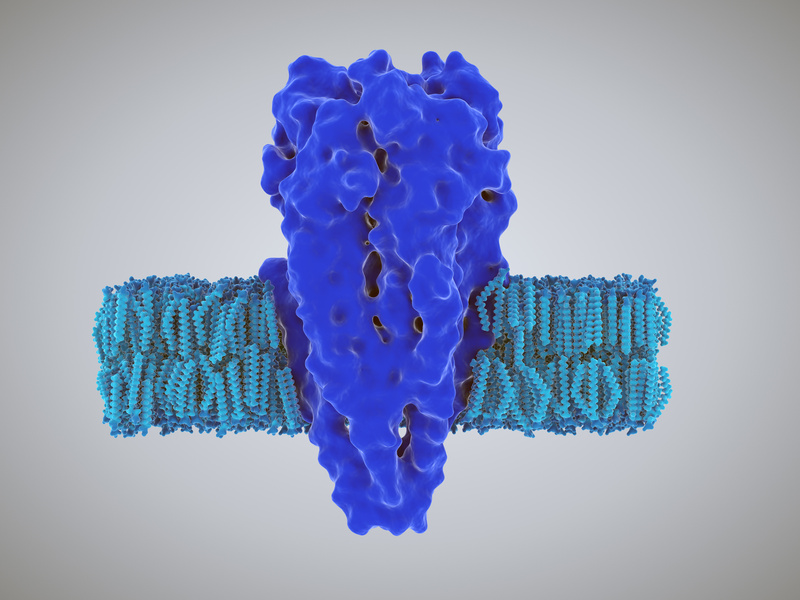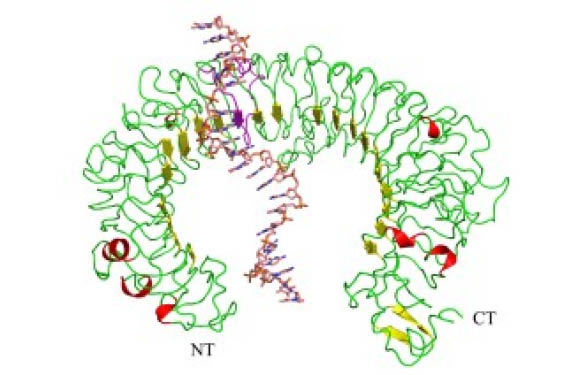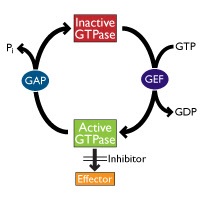The first time a cell biologist discovers that there might be a lipid involved in their favourite pathway, it’s a bit like finding a wall across the road (just the same situation as when a lipidomist finds a protein in their way…).
Due to the different nature of lipids, most cell biologists fear having to face this situation along their way. The good news is that there are some simple methods to help overcome this obstacle, and make the studyof lipids in a given pathway easier. Here, I’d like to go over some analytical and preparative tools for lipid-ligand interaction studies.
1- Overlay assays – identification of lipids interacting with given proteins
These are analytical methods allowing the identification of one or more lipids interacting with a given protein.
Reminiscent of Western-blot principles, their principle is a surface coated with various types of lipids that will be put in contact with a known protein that will be made extemporaneously detectable with a tag or an antibody. The support for lipids is often a nitrocellulose membrane (Figure 1). As in dot-blot type assays, optimization of some experimental parameters (such as buffer, protein purification or protein concentration) is required.
When there is a restriction in the amount of protein available, small “Overlay assay format” enables detection with less than 0.5 mg of protein. It’s an easy way to test binding capacities of a protein of interest to various lipids in one shot!

For the purpose of checking the relative affinity of a protein for various types of lipids, nitrocellulose arrays are spotted with a gradient of each lipid. Several identical arrays can prove useful in testing monospecific or polyspecific proteins. This technique shows high specificity (Figure 2) and the results can even come out cleaner than those from an ELISA kit, stressing again, the need for optimization of experimental conditions.

For people who are not comfortable with membranes or who have a large series of proteins under study, polystyrene plates covalently coated with various types of lipids (named COVA plates) are also available. Micro-array plate format for high content screening allows you to test (affinity-wise) several proteins with different lipids on one single plate. Each well of the plate is spotted with 9 different lipids in a test designed to reveal a protein previously tagged or through immunological detection. Shown here (Figure 3) is the case of a protein domain (known to interact with two different lipids). As for the set-ups presented previously, optimization of protein concentration is required.

Both COVA and micro-arrays plates can be customized for specific experimental needs.
2- Pull-down assays – discovery of protein partners to a known lipid
For the opposite experimental settings, when you want to identify a protein partner to a known lipid, a preparative technique like agarose-based pull-down assays would be your best option:
- Agarose beads coated with a defined lipid can be further incubated with cell lysates, supernatants, recombinant proteins…
- The interacting complex then pulls them down by centrifugation.
It allows the isolation of lipid binding proteins in quantities suitable for further identification and characterization. It is frequently used with cell lysates to “fish-out” a lipid counterpart (Figure 4).

3- Floatation assays – for higher specific protein-lipid interactions
When you’re looking for higher specific protein-lipid interaction, another preparative method based on lipid-enriched liposomes (used as a matrix support to the lipid/ligand interaction) is available.
Reminiscent of the GEM lipid raft extraction (ultracentrigugation in glucrose gradient), liposomes pre-bound to lipid-ligands will be distributed in several fractions along a glucose gradient prepared by ultracentrifugation (Figure 5).

There are many advantages to these lipid enriched liposomes:
- PolyPIPosomes are polymerized liposomes,
- Increased stability (up to 6 months),
- Biotin tag incorporated for easy detection with streptavidin,
- Uniform size (~200 nm) allowing floatation assays,
- These liposomes can be also used for: Surface Plasmon Resonance, Liposome overlay assays, ITC.
Want to know more and make your life easier in case you stumble upon a “scary lipid”?
Are you interested in learning more about these unique lipid-ligand interaction tools?
Get in touch with the lipidomics experts!
[contact-form to=’paola.vecino@tebu-bio.com’ subject=’Please tell me more about lipidomics’][contact-field label=’Name’ type=’name’ required=’1’/][contact-field label=’Email’ type=’email’ required=’1’/][contact-field label=’Comment’ type=’textarea’ required=’1’/][/contact-form]




6 Responses
What papers are these figures from? I’d love to check them out for some protocol help. Thanks.
Hi Serena,
Thank you for your question.
Some of the pictures come from Echelon’s website, others from publications and I did some of them…could you please let me know which picture would be of interest for you? May I help with the protocol you’re interested in?
Remaining fully available and with my best regards,
Paola
For the overlay assay, do you know if you have to use purified protein or can you use whole cell lysates with your protein of interest over-expressed?
Hi Nadia,
Overlay assays can help you sort out the unknow ligand(s) although manufacturer won’t give any guarantee of crystal clear results in these conditions (the use of cell lysates is not recommended because of the background cell lysates can produce…expect false positives). The ideal situation is using a purified (or enriched) tagged protein for these assays.
Are these products possible on bacteria-derived proteins? or only for eukaryotic derived?
Yes, absolutely, lipid interaction tools can be used with any protein, independently if they are eukaryotic or procaryotic origin